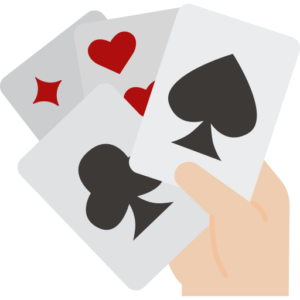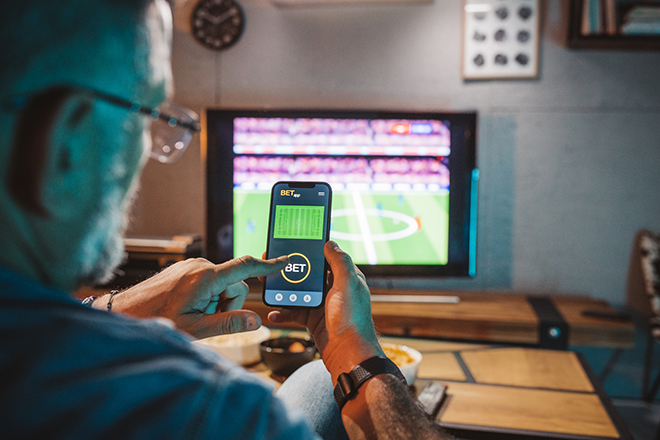Glossary Term
Heads-up
Heads-up
Used In: Poker
Introduction
Heads-up in poker refers to a scenario where only two players are competing directly against each other. This situation often arises at the final stage of a tournament, where the last remaining players battle for the top prize. Heads-up play is also a popular format in cash games and online poker, where players intentionally sit at one-on-one tables. Unlike full-ring or six-max games, heads-up poker involves unique strategies, faster decision-making, and a much wider range of playable hands.
The dynamics of heads-up poker are significantly different from those in multi-player games. With fewer players at the table, the blinds come around more frequently, forcing both players to stay active and adjust their strategies accordingly. Since there is no one else to fold to, bluffing becomes more common, and the ability to read your opponent’s tendencies becomes critical. Success in heads-up matches depends not just on understanding probabilities and hand strength, but also on mastering timing, pressure, and opponent psychology.
Because every decision in heads-up poker has a greater impact on the outcome, many players consider it the purest form of the game. The constant back-and-forth, rapid pace, and personal nature of the confrontation elevate the skill element and minimize the role of chance over time. Whether you're a seasoned tournament player aiming to improve your endgame or a newcomer curious about one-on-one formats, understanding heads-up poker is essential to becoming a more complete and adaptable player.
In Depth Look
In heads-up poker, the mechanics of the game revolve around a continuous back-and-forth between the two players. The game typically starts with the small blind and big blind posted by the two players, just like in other poker formats. However, because only two players are involved, the blinds rotate much more frequently. Each player is responsible for both positions (small and big blind) at different times, which significantly affects their strategy. A player is almost always forced to be involved in the action, either by calling, raising, or folding, leading to faster decision-making and more frequent betting.
The key mechanics also involve the betting structure. Since there are only two players, the betting rounds (pre-flop, post-flop, turn, and river) require careful attention to both hand strength and the opponent's tendencies. The pot grows quickly, and many hands will result in all-in situations or large pots, especially as the blinds increase. Bluffing becomes more prominent because players are often forced to take risks, knowing that folding would give up valuable chip stacks. Understanding when to take a stand, how to apply pressure, and when to back down is crucial to success in heads-up poker.
Mechanics
In heads-up poker, the mechanics of the game revolve around a continuous back-and-forth between the two players. The game typically starts with the small blind and big blind posted by the two players, just like in other poker formats. However, because only two players are involved, the blinds rotate much more frequently. Each player is responsible for both positions (small and big blind) at different times, which significantly affects their strategy. A player is almost always forced to be involved in the action, either by calling, raising, or folding, leading to faster decision-making and more frequent betting.
The key mechanics also involve the betting structure. Since there are only two players, the betting rounds (pre-flop, post-flop, turn, and river) require careful attention to both hand strength and the opponent's tendencies. The pot grows quickly, and many hands will result in all-in situations or large pots, especially as the blinds increase. Bluffing becomes more prominent because players are often forced to take risks, knowing that folding would give up valuable chip stacks. Understanding when to take a stand, how to apply pressure, and when to back down is crucial to success in heads-up poker.
- Aggression: The player who is more aggressive, forcing the opponent to respond with difficult decisions, typically has an advantage.
- Wide Hand Ranges: Hands that would be folded in multi-player games are often played in heads-up, including weak hands like suited connectors or low pairs.
- Frequent Bluffing: Bluffing and semi-bluffing are crucial in heads-up poker due to the limited number of players and the need to make big moves to win pots.


Illustrated Example
In a heads-up poker situation, let's consider two players, Player A and Player B, each holding different hands and facing different betting actions. Suppose the blinds are at 100/200, and Player A is on the small blind while Player B is on the big blind. Player A raises to 500, and Player B calls. The flop comes down with 7♠, 3♦, and Q♥. Player A, holding A♠ 5♣, has a gutshot straight draw, while Player B, holding Q♠ 10♦, has top pair (queens) with a decent kicker. On the turn, the 9♣ comes out, giving Player A a straight (A♠ 5♣, 6♠, 7♠, 8♠, 9♣) and pushing Player B into a difficult spot. Player A bets 1,000 to apply pressure, and Player B, uncertain of the situation, decides to call.
On the river, the 2♦ completes the board, and Player A now has a winning straight, while Player B only holds top pair. Despite Player B's strong hand (pair of queens), Player A's aggressive betting has successfully forced Player B to make tough decisions, demonstrating the importance of both hand strength and psychological pressure in heads-up play. In heads-up poker, players must consider the betting patterns and potential draws, adjusting their play accordingly. Bluffing, semi-bluffing, and reading the opponent's possible holdings become key to winning pots, especially when facing just one adversary.
| Street | Board | Player A (A♠ 5♣) | Player B (Q♠ 10♦) | Action |
|---|---|---|---|---|
| Pre-Flop | — | Raise to 500 (Small Blind) | Call (Big Blind) | Player A raises, Player B calls |
| Flop | 7♠ 3♦ Q♥ | Gutshot straight draw (A♠ 5♣) | Top pair (Q♠ 10♦) | Player A checks, Player B bets 600 |
| Turn | 9♣ | Straight (A♠ 5♣, 6♠, 7♠, 8♠, 9♣) | Top pair (Q♠ 10♦) | Player A bets 1,000, Player B calls |
| River | 2♦ | Straight (A♠ 5♣, 6♠, 7♠, 8♠, 9♣) | Top pair (Q♠ 10♦) | Player A bets 2,000, Player B folds |
Player Perspective
А player’s perspective shifts dramatically from the multi-player game, as every decision has a direct and immediate impact on the outcome. The small number of participants means that you’re constantly involved in the action, and the need for adaptability is crucial. As Player A, you’re forced to be more aggressive, widening your hand range to include hands you might not normally play in a multi-player setting. You know that your opponent, Player B, is watching your moves closely and trying to read your betting patterns, so it’s essential to balance your play—mixing in bluffs, semi-bluffs, and value bets in a way that keeps Player B guessing. Every time the action comes to you, your decision to bet, raise, or fold becomes more significant, as each play carries more weight in this one-on-one battle.
From the perspective of Player B, the situation calls for a keen understanding of both hand strength and psychological pressure. While you may have a strong hand, like top pair, your opponent’s actions are forcing you to evaluate not just your cards, but the context of the game. Heads-up poker requires reading into the small nuances of your opponent’s play—are they bluffing? Are they weak or strong? You must be constantly vigilant, keeping track of the bets they’ve made, the frequencies of their aggression, and any patterns they may be establishing. As Player B, there’s always the temptation to outplay your opponent through aggression, but you also need to know when to fold or slow down, especially when your opponent is putting you to the test with large bets. The mental battle in heads-up poker is just as important as the cards, as you attempt to outmaneuver and outlast your single adversary.
Conclusion
heads-up poker is a thrilling and dynamic form of the game that requires a unique blend of strategy, aggression, and psychological insight. With only two players involved, the pace accelerates, and each decision holds more weight, as there is no room for passivity. The key to success lies in mastering the delicate balance between playing aggressively and reading your opponent’s tendencies, as bluffing and strategic bets often take center stage. Understanding when to take risks, when to slow down, and how to exploit an opponent's weaknesses are essential skills for anyone aiming to excel in heads-up play. Whether in tournament finales or cash game duels, heads-up poker represents the ultimate test of a player's adaptability, skill, and mental fortitude, offering a pure and intense challenge for those ready to step into the ring.
The Top Online Casinos for Playing Poker
These platforms prioritize player satisfaction by providing intuitive interfaces, seamless gameplay experiences, and robust security measures to ensure a fair and enjoyable environment for all users.


Author
Branimir Ivanov | Senior News Contributor








